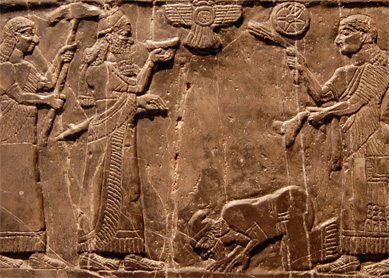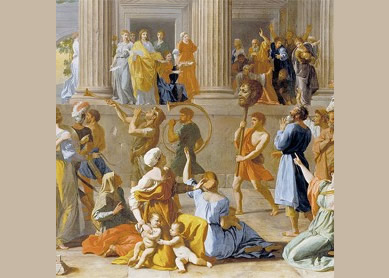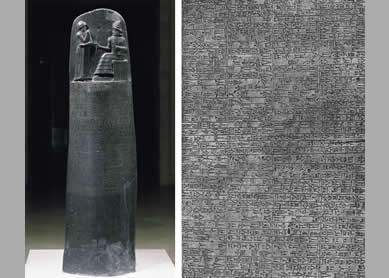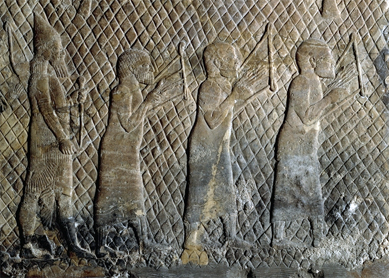Kingship (rule by a single, male monarch) was the nearly exclusive form of government in the ancient Near East. Female monarchs, such as Hatshepsut in Egypt and Athaliah in Judah (
Monarchy in the ancient Near East was by definition hereditary and dynastic. We see such expectations and traditions in the Hebrew Bible, especially in the books of Samuel, Kings, and Chronicles. A king was expected to be succeeded by his oldest son, that son by his oldest son, and so on. If a king was sonless, the closest male relative would succeed him, continuing the dynasty. Usurpation—succession by someone who as not an heir—was relatively common and was not peaceful. It typically entailed a violent overthrow by a military rival of the king or dynasty or both and slaughter of supporters and family members of the former king or dynasty.
The domains of ancient Near Eastern kings varied in size. Some ruled over city-states; others claimed vast empires. There was, therefore, a hierarchy among kings. Conquering kings subjugated those monarchs whom they conquered. Conquered kings could still be “kings,” but they had obligations to the conqueror: usually annual payment of tribute, specified in quantities of gold, silver, and goods. Kings who were equals also drafted treaties between themselves agreeing to mutual recognition and the avoidance of hostilities.
Monarchs were considered to be the owners of the lands in their realms with final authority over their subjects and subject property. At the same time, they had certain responsibilities. Above all, they were expected to ensure order in their kingdoms and justice for all subject citizens. (The famous Code of Hammurabi is a good example.) Kings were also understood to be the defenders of their domains and hence the leaders of their armies.
Kings had a special relationship with the national gods. In Egypt, the monarch, or pharaoh (meaning “great house”), was even considered divine. An important part of the monarch’s task of maintaining order was the appeasement of the gods. Kings were also expected to build and maintain temples to the gods, and they had a special role in the worship of the head god. In fact, the understanding of the gods and language referring to them was drawn from the political system of kingship and is reflected in biblical references to God as king. In the ancient Near East, this meant that the national god (Israel’s was Yahweh) was considered the king of the gods. Other, lesser deities served as members of his court or counsel, just as the human king had a group of advisors or a cabinet.
Trappings of kingship included the royal residence or palace, crown, throne, scepter, and (in Egypt) the flail. These things together with statuary, reliefs, inscriptions, and other documents (including biblical texts) were useful propaganda, exalting the king’s accomplishments and illustrating his election and favor by the gods—particularly important if he was a usurper.
Bibliography
- Fox, Nili Sacher. In the Service of the King: Officialdom in Ancient Israel and Judah. Cincinnati, Ohio: Hebrew Union College Press, 2000.
- Day, John, ed. King and Messiah in Israel and the Ancient Near East. Journal for the Study of the Old Testament: Supplement Series 270. Sheffield: Sheffield Academic Press, 1998.
- Mettinger, Tryggve N. D. King and Messiah: The Civil and Sacral Legitimation of the Israelite Kings. Lund: Gleerup, 1976.





